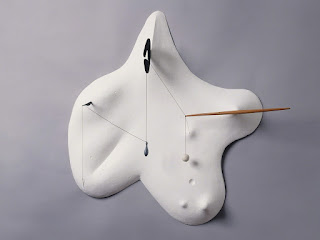II: The Statue of Liberty
19th century sculpture seems to be largely made up of commemorations or celebrations of certain subjects in the neoclassical or realist style. Whether it be celebrating the art of dance with Jean-Baptiste Carpeaux’s La Danse, which is a masterful personification of the art of dance, or Daniel Chester French’s statue of a seated Abraham Lincoln in the Lincoln Memorial to commemorate the great president, sculpture in the 19th century possesses a deliberateness in its purpose and depictions. Heroes were immortalized, morals, concepts, and virtues were personified all in a very clear manner. In the 19th century, the act of commemoration highly favored the celebratory side but over the years what is being celebrated has come into question. Recently, many sculptures of Civil War soldiers that fought for the Confederacy have been deemed unfit to be public monuments. It is unclear in the first place why a person like Robert E. Lee should be commemorated. Sure, he was an extremely talented military mind, but Lee was an enemy of the Union fighting for a rebel army. Why should an enemy of the government that won the Civil War be immortalized as a figure to revere? Nevertheless, nowadays the appropriateness of a statue commemorating the life of a known supporter of slavery is nonexistent and now comes the question, “What does one do with a fine work of art that glorifies a less-than-fine figure in history?”
This is an interesting phenomenon that occurs in public works of art, their meaning and appropriateness change with time. A good example of this is Liberty Enlightening the World, or as it is more commonly known, The Statue of Liberty. When the Statue of Liberty was first conceived and built it was first a commemoration of the United States’ independence. It also represented the fact that America was a nation that valued freedom for all as the project was conceived in the same year that slavery was abolished in the Unites States. America was a model society that gave people new opportunities that they did not have in their native country and would strive to enlighten other nations as to how they should govern their people. This is what America had always represented to the rest of the world, a promised land where one could run and seek asylum from oppression. This was the reason why the pilgrims went there in the mid 1600s and why people still go today. The only difference is that now America seems to be a place that fosters hate and fear for “the other.” The US has recently begun to change immigration legislation to focus on prioritizing more wealthy and westernized immigrants over those who may actually be in need of asylum. It is interesting to think that the Statue of Liberty was meant to give immigrants arriving to New York by boat a sense of hope for their life to come. One of the first images they would see before starting anew is that of a woman bearing a guiding light to show them the way to freedom whether it be financial or political. Now the Statue of Liberty is really only seen by tourists, not immigrants, and is sort of a relic of a more progressive America even though America was hardly a tolerant place in the 19th century. The Statue of Liberty seems to now represent America’s superficiality by being a tourist trap and an image of excess wealth and dominance. The statue’s proportions are that of The Sphinx, a project built by slaves for an oppressive leader. Her image has been used in political cartoons portraying a bullying and greedy America. It is not so much the role of sculpture that has changed, it is just that viewpoints change, as they do, for better or for worse.
The Statue of Liberty is still a reminder of freedom for many though and that is why sculpture from the past will always have value. It can serve as a reminder for an enduring concept like liberty, or as a reminder of horrible things that have happened like the Civil War. Part of the meaning is in how the sculpture is interacted with by the viewer. Now that the Statue of Liberty is a method of squeezing money out of tourists it seems less potent of a reminder of freedom and new beginnings than when it was being viewed from a boat porthole by an incoming immigrant. The statues of Robert E. Lee sprinkled around the country should not fulfill their intended purpose to celebrate a racist slave owner by being in public parks or town centers, but should instead be placed somewhere for education of the fact that someone like Lee existed and was exalted.
#hadpratt, #hadsopratt, #hadstories, #hadhistoryofsculpture



Comments
Post a Comment